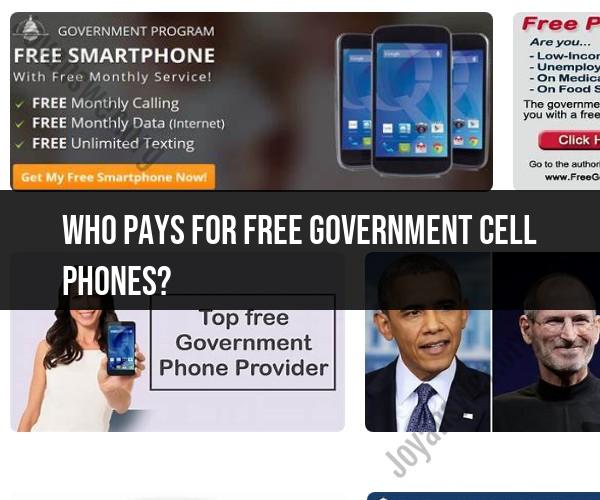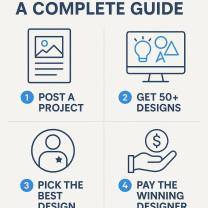Who pays for free government cell phones?
The cost of free government cell phones is typically covered through a federal program called the Lifeline Assistance program. The program is funded by the Universal Service Fund (USF), which is administered by the Federal Communications Commission (FCC). Here's how it works:
Universal Service Fund (USF): The USF is a pool of funds collected from telecommunications providers, including phone companies and internet service providers. These providers contribute a portion of their revenue to the USF.
Lifeline Assistance Program: The Lifeline program is one of the initiatives funded by the USF. It was established to ensure that low-income individuals and families have access to affordable phone services, which can include both landline and cell phone services.
Subsidized Service: Under the Lifeline program, eligible low-income individuals receive a subsidy or discount on their monthly phone service. This subsidy helps cover the cost of basic phone service, which may include free or heavily discounted cell phone plans.
Participating Service Providers: The Lifeline program partners with approved service providers, including both traditional phone companies and wireless carriers. These providers offer Lifeline-supported plans to eligible individuals.
Eligibility: To qualify for the Lifeline program and receive a free government cell phone or subsidized service, individuals must meet certain income guidelines or participate in federal assistance programs such as Medicaid, Supplemental Nutrition Assistance Program (SNAP), Supplemental Security Income (SSI), or others. Eligibility criteria can vary by state.
Free or Discounted Phones: Some Lifeline providers may offer free cell phones as part of their service plans, while others may offer discounted phones to eligible participants.
Monthly Plans: Lifeline-supported plans typically include a certain number of free minutes and texts each month. Some plans may also include a limited amount of data.
Recertification: Lifeline participants are usually required to recertify their eligibility for the program periodically to continue receiving the subsidy.
It's important to note that the availability of free government cell phones and the specific plans offered can vary by state and may change over time. Eligible individuals should contact approved Lifeline service providers or check the Lifeline website for information on available plans and how to apply.
The Lifeline program aims to bridge the digital divide by ensuring that low-income individuals have access to essential communication services, which can be vital for job searches, access to healthcare, and staying connected with family and emergency services.
Free Government Cell Phones: Who Bears the Cost?
The cost of free government cell phone programs is borne by a variety of stakeholders, including:
- The federal government: The federal government provides funding for some free government cell phone programs, such as the Lifeline Assistance Program and the Affordable Connectivity Program (ACP).
- State and local governments: State and local governments also provide funding for some free government cell phone programs.
- Telecommunications companies: Telecommunications companies participate in free government cell phone programs by providing free or discounted phone service to eligible customers.
- Nonprofit organizations: Nonprofit organizations also play a role in financing free government cell phone programs. For example, some nonprofit organizations provide funding to help cover the cost of phones and service for eligible customers.
Financing Free Government Cell Phone Programs
Free government cell phone programs are financed through a variety of mechanisms, including:
- Government funding: As mentioned above, the federal government, state and local governments, and nonprofit organizations provide funding for free government cell phone programs.
- Telecommunications company revenue: Telecommunications companies also contribute to the financing of free government cell phone programs by providing free or discounted phone service to eligible customers.
- Universal service fees: Universal service fees are a type of tax that is paid by all telecommunications customers. This revenue is used to support a variety of telecommunications programs, including free government cell phone programs.
3. The Economics of Free Government Cell Phone Programs
There are a number of economic benefits associated with free government cell phone programs. These benefits include:
- Increased access to communication: Free government cell phone programs can help to increase access to communication for low-income individuals and families. This can help them to stay connected with loved ones, access important information and services, and find jobs.
- Reduced social isolation: Free government cell phone programs can help to reduce social isolation among low-income individuals and families. This can lead to improved mental and physical health outcomes.
- Economic development: Free government cell phone programs can help to support economic development in low-income communities. This is because access to communication is essential for economic participation.
However, there are also some economic costs associated with free government cell phone programs. These costs include:
- The cost of the programs: The cost of free government cell phone programs is borne by a variety of stakeholders, including the federal government, state and local governments, telecommunications companies, and nonprofit organizations.
- The potential for fraud: There is a potential for fraud in free government cell phone programs. For example, individuals who are not eligible for the programs may try to sign up for them.
- The impact on competition: Free government cell phone programs may have a negative impact on competition in the telecommunications industry. This is because the programs can give telecommunications companies that participate in them an unfair advantage.
Overall, the economics of free government cell phone programs are complex. There are both economic benefits and costs associated with these programs. It is important to weigh the benefits and costs carefully when making decisions about whether or not to support these programs.













